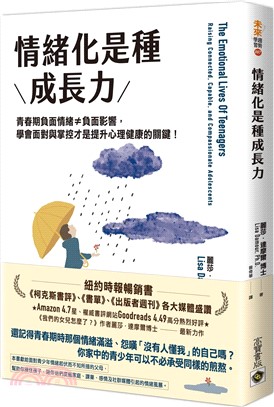相關商品
商品簡介
作者簡介
名人/編輯推薦
目次
商品簡介
內 容 提 要
本書以提高英語的應用能力為導向,對財務會計的基本知識做了詳細介紹,同時涉及成本會計、管理會計、審計等內容。全書共10章,主要內容包括會計概述、會計循環、財務報表、流動資產、非流動資產、負債、所有者權益、收入、費用、成本會計等。同時,每章還配有學習目標、聽力音頻、知識拓展、關鍵術語、複習討論題、練習題、參考譯文等。
本書不僅可以作為高等院校會計學、財務管理、審計等專業的教材,也可以作為財務會計人員、管理人員的自學用書。
本書以提高英語的應用能力為導向,對財務會計的基本知識做了詳細介紹,同時涉及成本會計、管理會計、審計等內容。全書共10章,主要內容包括會計概述、會計循環、財務報表、流動資產、非流動資產、負債、所有者權益、收入、費用、成本會計等。同時,每章還配有學習目標、聽力音頻、知識拓展、關鍵術語、複習討論題、練習題、參考譯文等。
本書不僅可以作為高等院校會計學、財務管理、審計等專業的教材,也可以作為財務會計人員、管理人員的自學用書。
作者簡介
耿云江 2002年4月至今任教東北財經大學會計學院,主要講授管理會計、Financial Statement Analysis,會計英語等。參編高級財務管理、管理會計、公司理財等教材多部。
名人/編輯推薦
本書注重知識體系的完整,突出會計英語實踐能力和應用技能的培養,並注重教學內容和教材結構的創新。由于本書具有知識系統、內容翔實、案例豐富、貼近實際、突出實用性、通俗易懂、便于學習等特點,
目次
Chapter 1 Overview of Accounting 1
Listening Online 1
Learning Objectives 1
1.1 Accounting and Accounting Profession 1
1.1.1 Ethics 2
1.1.2 Accounting Function 2
1.1.3 Accounting Information Users 3
1.1.4 Accounting Profession 3
1.2 Accounting Assumptions 4
1.2.1 Business Entity 4
1.2.2 Going-concern 5
1.2.3 Monetary Unit 6
1.2.4 Time Period 7
1.3 Accounting Principles 8
1.3.1 Accrual Basis 8
1.3.2 Historical Cost 9
1.3.3 Realization 10
1.3.4 Matching 11
1.3.5 Full Disclosure 11
1.4 Quality Characteristics of Accounting Information 11
1.4.1 Relevance 13
1.4.2 Reliability 13
1.4.3 Comparability 14
1.4.4 Materiality 14
Key Terminologies 15
Review and Discussion Questions 17
Exercises 17
參考譯文 18
Chapter 2 Accounting Cycle 26
Listening Online 26
Learning Objectives 26
2.1 Accounting Equation and
Double-entry System 26
2.1.1 Accounting Equation 26
2.1.2 Double-entry System 27
2.2 Accounting Cycle 27
2.3 Journals 28
2.4 Ledgers 29
2.5 Adjusting 30
2.5.1 Prepaid Expenses 30
2.5.2 Accrued Expenses 31
2.5.3 Accrued Revenues 32
2.5.4 Unearned Revenues 32
2.6 Closing Process 33
2.6.1 Temporary and Permanent Accounts 33
2.6.2 Posting Closing Entries 33
2.7 Trial Balance 34
2.7.1 Steps in Preparing a Trial Balance 34
2.7.2 Searching For and Correcting Errors 35
Key Terminologies 36
Review and Discussion Questions 37
Exercises 37
參考譯文 38
Chapter 3 Financial Statements 45
Listening Online 45
Learning Objectives 45
3.1 Balance Sheet 45
3.1.1 Components of Balance Sheet 45
3.1.2 Form of Balance Sheet 47
3.2 Income Statement 50
3.2.1 Components of Income Statement 50
3.2.2 Form of Income Statement 52
3.3 Cash Flow Statement 54
3.3.1 Components of Cash Flow Statement 54
3.3.2 Preparation of Cash Flow Statement 55
3.4 Statement of Changes in Equity 58
3.4.1 Components of Statement of Changes in Equity 59
3.4.2 Preparation of Statement of Changes in Equity 59
3.5 Notes to Financial Statements 61
3.5.1 Accounting Policy 61
3.5.2 Financial Instruments 61
3.5.3 Related Party Transactions 62
3.5.4 Contingencies 62
3.5.5 Subsequent Events 62
Key Terminologies 65
Review and Discussion Questions 66
Exercises 67
參考譯文 68
Chapter 4 Current Assets 81
Listening Online 81
Learning Objectives 81
4.1 Monetary Capital 81
4.1.1 Cash 81
4.1.2 Management of Cash-bank Reconciliation 82
4.1.3 Internal Control Over Cash 83
4.1.4 Petty Cash Fund 84
4.1.5 Cash Over and Short 84
4.2 Receivables 85
4.2.1 Classification of Receivables 85
4.2.2 Bad Debts 85
4.2.3 Estimation of Bad Debts 87
4.3 Inventories 88
4.3.1 Inventory System 88
4.3.2 Cost of Inventory Acquired 89
4.3.3 Ending Inventory Valuation 89
Key Terminologies 91
Review and Discussion Questions 92
Exercises 92
參考譯文 93
Chapter 5 Non-current
Assets 100
Listening Online 100
Learning Objectives 100
5.1 Fixed Assets 100
5.1.1 Definition and Characteristics of Fixed Assets 100
5.1.2 Classification of Fixed Assets 101
5.1.3 Costs of Fixed Assets 101
5.1.4 Post-acquisition Expenditures 102
5.1.5 Depreciation and Impairment 103
5.1.6 Disposals of Fixed Assets 104
5.2 Intangible Assets 105
5.2.1 Definition and Characteristics of Intangible Assets 105
5.2.2 Main Categories of Intangible Assets 105
5.2.3 Recognition and Measurement of Intangible Assets 106
5.2.4 Post-acquisition Measurement 107
5.2.5 Disposals of Intangible Assets 108
5.3 Investments 108
5.3.1 Objectives of Investment 108
5.3.2 Types of Securities 109
Key Terminologies 110
Review and Discussion Questions 111
Exercises 111
參考譯文 113
Chapter 6 Liabilities and Owner’s
Equity 119
Listening Online 119
Learning Objectives 119
6.1 Current Liabilities 119
6.1.1 Definition of Current Liabilities 119
6.1.2 Accounts Payable 120
6.1.3 Short-term Notes Payable 120
6.1.4 Unearned Revenue 120
6.1.5 Short-term Borrowings 120
6.1.6 Accrued Liabilities 121
6.1.7 Dividend Payable 121
6.1.8 Current Portion of Long-term Obligation 121
6.2 Non-current Liabilities 122
6.2.1 Long-term Borrowings 123
6.2.2 Bonds Payable 123
6.2.3 Long-term Notes Payable 124
6.2.4 Pension Plans 124
6.3 Types of Organization 125
6.3.1 Sole Proprietorship 125
6.3.2 Partnership 125
6.3.3 Corporation 126
6.4 Owner’s Equity 127
6.4.1 Rights of Stockholders 127
6.4.2 Retained Earnings 128
6.4.3 Dividend 128
Key Terminologies 129
Review and Discussion Questions 130
Exercises 130
參考譯文 131
Chapter 7 Revenue and
Expense 138
Listening Online 138
Learning Objectives 138
7.1 Revenue 138
7.1.1 Definition of Revenue 138
7.1.2 The Earning Process of Revenue 139
7.1.3 Recognition of Revenue 139
7.2 Expense 141
7.2.1 Definition of Expense 141
7.2.2 Cost Vs Expense 142
7.2.3 Recognition of Expense 142
7.2.4 Specific Expense Items 142
Key Terminologies 144
Review and Discussion Questions 144
Exercises 144
參考譯文 146
Chapter 8 Cost Accounting 150
Listening Online 150
Learning Objectives 150
8.1 Overview of Cost Accounting 150
8.1.1 Definition of Cost
Accounting 150
8.1.2 Features of Cost Accounting 150
8.1.3 Financial Accounting, Management Accounting and
Cost Accounting 151
8.1.4 Cost Classifications 152
8.2 Costing Method 155
8.2.1 Job-order Costing 155
8.2.2 Process Costing 156
8.2.3 Activity Based Costing 158
Key Terminologies 160
Review and Discussion Questions 161
Exercises 161
參考譯文 162
Chapter 9 Management Accounting 168
Listening Online 168
Learning Objectives 168
9.1 Introduction to Management Accounting 168
9.1.1 Definition of Management Accounting 168
9.1.2 Comparison of Financial and Management Accounting 168
9.1.3 Functions of Management Accounting 170
9.2 Cost Behavior 171
9.2.1 Variable Cost 171
9.2.2 Fixed Cost 172
9.2.3 Mixed Cost 172
9.3 Cost-Volume-Profit Analysis 173
9.3.1 Basic Concept of Cost-Volume-Profit Analysis 173
9.3.2 Break-even Analysis 174
9.3.3 Target Profit Analysis 175
9.4 Budget and Performance
Evaluation 176
9.4.1 Budget 176
9.4.2 Performance Evaluation 177
Key Terminologies 179
Review and Discussion Questions 180
Exercises 180
參考譯文 181
Chapter 10 Audit 187
Listening Online 187
Learning Objectives 187
10.1 Introduction to Audit 187
10.1.1 Definition of Audit 187
10.1.2 Types of Audit 189
10.1.3 Types of Auditors 190
10.1.4 Componets of Audit Report 191
10.2 Audit Procedure 192
10.2.1 Management Assertions 192
10.2.2 Identify Audit Objectives 193
10.2.3 Carry Out Audit Specifically 194
10.3 Internal Control 198
10.3.1 Definition of Internal Control 198
10.3.2 Development History of Internal Control 199
10.3.3 Elements of Internal Control 199
Key Terminologies 202
Review and Discussion Questions 203
Exercises 203
參考譯文 204
Listening Online 1
Learning Objectives 1
1.1 Accounting and Accounting Profession 1
1.1.1 Ethics 2
1.1.2 Accounting Function 2
1.1.3 Accounting Information Users 3
1.1.4 Accounting Profession 3
1.2 Accounting Assumptions 4
1.2.1 Business Entity 4
1.2.2 Going-concern 5
1.2.3 Monetary Unit 6
1.2.4 Time Period 7
1.3 Accounting Principles 8
1.3.1 Accrual Basis 8
1.3.2 Historical Cost 9
1.3.3 Realization 10
1.3.4 Matching 11
1.3.5 Full Disclosure 11
1.4 Quality Characteristics of Accounting Information 11
1.4.1 Relevance 13
1.4.2 Reliability 13
1.4.3 Comparability 14
1.4.4 Materiality 14
Key Terminologies 15
Review and Discussion Questions 17
Exercises 17
參考譯文 18
Chapter 2 Accounting Cycle 26
Listening Online 26
Learning Objectives 26
2.1 Accounting Equation and
Double-entry System 26
2.1.1 Accounting Equation 26
2.1.2 Double-entry System 27
2.2 Accounting Cycle 27
2.3 Journals 28
2.4 Ledgers 29
2.5 Adjusting 30
2.5.1 Prepaid Expenses 30
2.5.2 Accrued Expenses 31
2.5.3 Accrued Revenues 32
2.5.4 Unearned Revenues 32
2.6 Closing Process 33
2.6.1 Temporary and Permanent Accounts 33
2.6.2 Posting Closing Entries 33
2.7 Trial Balance 34
2.7.1 Steps in Preparing a Trial Balance 34
2.7.2 Searching For and Correcting Errors 35
Key Terminologies 36
Review and Discussion Questions 37
Exercises 37
參考譯文 38
Chapter 3 Financial Statements 45
Listening Online 45
Learning Objectives 45
3.1 Balance Sheet 45
3.1.1 Components of Balance Sheet 45
3.1.2 Form of Balance Sheet 47
3.2 Income Statement 50
3.2.1 Components of Income Statement 50
3.2.2 Form of Income Statement 52
3.3 Cash Flow Statement 54
3.3.1 Components of Cash Flow Statement 54
3.3.2 Preparation of Cash Flow Statement 55
3.4 Statement of Changes in Equity 58
3.4.1 Components of Statement of Changes in Equity 59
3.4.2 Preparation of Statement of Changes in Equity 59
3.5 Notes to Financial Statements 61
3.5.1 Accounting Policy 61
3.5.2 Financial Instruments 61
3.5.3 Related Party Transactions 62
3.5.4 Contingencies 62
3.5.5 Subsequent Events 62
Key Terminologies 65
Review and Discussion Questions 66
Exercises 67
參考譯文 68
Chapter 4 Current Assets 81
Listening Online 81
Learning Objectives 81
4.1 Monetary Capital 81
4.1.1 Cash 81
4.1.2 Management of Cash-bank Reconciliation 82
4.1.3 Internal Control Over Cash 83
4.1.4 Petty Cash Fund 84
4.1.5 Cash Over and Short 84
4.2 Receivables 85
4.2.1 Classification of Receivables 85
4.2.2 Bad Debts 85
4.2.3 Estimation of Bad Debts 87
4.3 Inventories 88
4.3.1 Inventory System 88
4.3.2 Cost of Inventory Acquired 89
4.3.3 Ending Inventory Valuation 89
Key Terminologies 91
Review and Discussion Questions 92
Exercises 92
參考譯文 93
Chapter 5 Non-current
Assets 100
Listening Online 100
Learning Objectives 100
5.1 Fixed Assets 100
5.1.1 Definition and Characteristics of Fixed Assets 100
5.1.2 Classification of Fixed Assets 101
5.1.3 Costs of Fixed Assets 101
5.1.4 Post-acquisition Expenditures 102
5.1.5 Depreciation and Impairment 103
5.1.6 Disposals of Fixed Assets 104
5.2 Intangible Assets 105
5.2.1 Definition and Characteristics of Intangible Assets 105
5.2.2 Main Categories of Intangible Assets 105
5.2.3 Recognition and Measurement of Intangible Assets 106
5.2.4 Post-acquisition Measurement 107
5.2.5 Disposals of Intangible Assets 108
5.3 Investments 108
5.3.1 Objectives of Investment 108
5.3.2 Types of Securities 109
Key Terminologies 110
Review and Discussion Questions 111
Exercises 111
參考譯文 113
Chapter 6 Liabilities and Owner’s
Equity 119
Listening Online 119
Learning Objectives 119
6.1 Current Liabilities 119
6.1.1 Definition of Current Liabilities 119
6.1.2 Accounts Payable 120
6.1.3 Short-term Notes Payable 120
6.1.4 Unearned Revenue 120
6.1.5 Short-term Borrowings 120
6.1.6 Accrued Liabilities 121
6.1.7 Dividend Payable 121
6.1.8 Current Portion of Long-term Obligation 121
6.2 Non-current Liabilities 122
6.2.1 Long-term Borrowings 123
6.2.2 Bonds Payable 123
6.2.3 Long-term Notes Payable 124
6.2.4 Pension Plans 124
6.3 Types of Organization 125
6.3.1 Sole Proprietorship 125
6.3.2 Partnership 125
6.3.3 Corporation 126
6.4 Owner’s Equity 127
6.4.1 Rights of Stockholders 127
6.4.2 Retained Earnings 128
6.4.3 Dividend 128
Key Terminologies 129
Review and Discussion Questions 130
Exercises 130
參考譯文 131
Chapter 7 Revenue and
Expense 138
Listening Online 138
Learning Objectives 138
7.1 Revenue 138
7.1.1 Definition of Revenue 138
7.1.2 The Earning Process of Revenue 139
7.1.3 Recognition of Revenue 139
7.2 Expense 141
7.2.1 Definition of Expense 141
7.2.2 Cost Vs Expense 142
7.2.3 Recognition of Expense 142
7.2.4 Specific Expense Items 142
Key Terminologies 144
Review and Discussion Questions 144
Exercises 144
參考譯文 146
Chapter 8 Cost Accounting 150
Listening Online 150
Learning Objectives 150
8.1 Overview of Cost Accounting 150
8.1.1 Definition of Cost
Accounting 150
8.1.2 Features of Cost Accounting 150
8.1.3 Financial Accounting, Management Accounting and
Cost Accounting 151
8.1.4 Cost Classifications 152
8.2 Costing Method 155
8.2.1 Job-order Costing 155
8.2.2 Process Costing 156
8.2.3 Activity Based Costing 158
Key Terminologies 160
Review and Discussion Questions 161
Exercises 161
參考譯文 162
Chapter 9 Management Accounting 168
Listening Online 168
Learning Objectives 168
9.1 Introduction to Management Accounting 168
9.1.1 Definition of Management Accounting 168
9.1.2 Comparison of Financial and Management Accounting 168
9.1.3 Functions of Management Accounting 170
9.2 Cost Behavior 171
9.2.1 Variable Cost 171
9.2.2 Fixed Cost 172
9.2.3 Mixed Cost 172
9.3 Cost-Volume-Profit Analysis 173
9.3.1 Basic Concept of Cost-Volume-Profit Analysis 173
9.3.2 Break-even Analysis 174
9.3.3 Target Profit Analysis 175
9.4 Budget and Performance
Evaluation 176
9.4.1 Budget 176
9.4.2 Performance Evaluation 177
Key Terminologies 179
Review and Discussion Questions 180
Exercises 180
參考譯文 181
Chapter 10 Audit 187
Listening Online 187
Learning Objectives 187
10.1 Introduction to Audit 187
10.1.1 Definition of Audit 187
10.1.2 Types of Audit 189
10.1.3 Types of Auditors 190
10.1.4 Componets of Audit Report 191
10.2 Audit Procedure 192
10.2.1 Management Assertions 192
10.2.2 Identify Audit Objectives 193
10.2.3 Carry Out Audit Specifically 194
10.3 Internal Control 198
10.3.1 Definition of Internal Control 198
10.3.2 Development History of Internal Control 199
10.3.3 Elements of Internal Control 199
Key Terminologies 202
Review and Discussion Questions 203
Exercises 203
參考譯文 204
主題書展
更多
主題書展
更多書展本週66折
您曾經瀏覽過的商品
購物須知
大陸出版品因裝訂品質及貨運條件與台灣出版品落差甚大,除封面破損、內頁脫落等較嚴重的狀態,其餘商品將正常出貨。
特別提醒:部分書籍附贈之內容(如音頻mp3或影片dvd等)已無實體光碟提供,需以QR CODE 連結至當地網站註冊“並通過驗證程序”,方可下載使用。
無現貨庫存之簡體書,將向海外調貨:
海外有庫存之書籍,等候約45個工作天;
海外無庫存之書籍,平均作業時間約60個工作天,然不保證確定可調到貨,尚請見諒。
為了保護您的權益,「三民網路書店」提供會員七日商品鑑賞期(收到商品為起始日)。
若要辦理退貨,請在商品鑑賞期內寄回,且商品必須是全新狀態與完整包裝(商品、附件、發票、隨貨贈品等)否則恕不接受退貨。

























